|
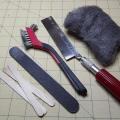 |
Materials & Tools:
Craft sticks / basswood / balsa
Razor saw
Emery board (or sand paper)
Steel wire brush and steel wool
Note: Different woods have different densities and will
affect how much pressure is needed to achieve the graining effect
|
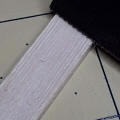 |
Stage 1
Scrape the
edge of your material with the serrated edge of the razor saw. This
helps loosen up the fibres of harder woods and adds texture to the whole
of the surface. Do the same on the other side of the wood, if both sides
will be on view. |
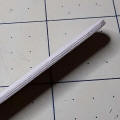 |
Stage 2
Use the same
technique on the edges of the wood, especially if they may be on view.
Note: planning
ahead is beneficial. Texturing your material now, prior to cutting and
assembling, will save you time and effort later on. |
 |
Stage 3
Use the end of
the razor saw to engrave a more prominent wood-like texture. Allow the
natural wood grain to guide the end of the saw when possible, giving you
a more natural pattern. Notice the results of Step 1 filling in the
spaces between the deeper lines. |
 |
Stage 4
Lightly sand
your material to help remove stray bits of wood and fibres that occur
during texturing and carving. I recommend using a circular motion
allowing the file to hit the material from all directions. |
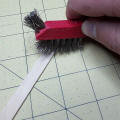 |
Stage 5
Scour the
surface of your material with a steel brush, following the grain lines.
The density of your material with determine how aggressive you have to
be. This will add a subtle texture, especially to softer woods. It will
also help clean out the sawdust from sanding. |
 |
Stage 6
The wire brush
will leave stray wood fibres attached to the piece. A gentle rub with
some fine steel wool will remove most of those very easily. |
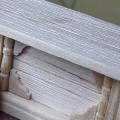 |
Example 1
Part of a
tavern bar showing the graining effect. |
 |
Example 2
More sections of the tavern bar painted in a dark brown
colour, with a black wash to bring out the texture.
|









